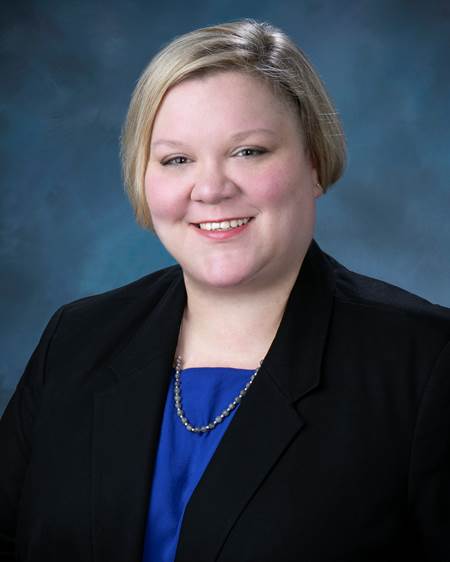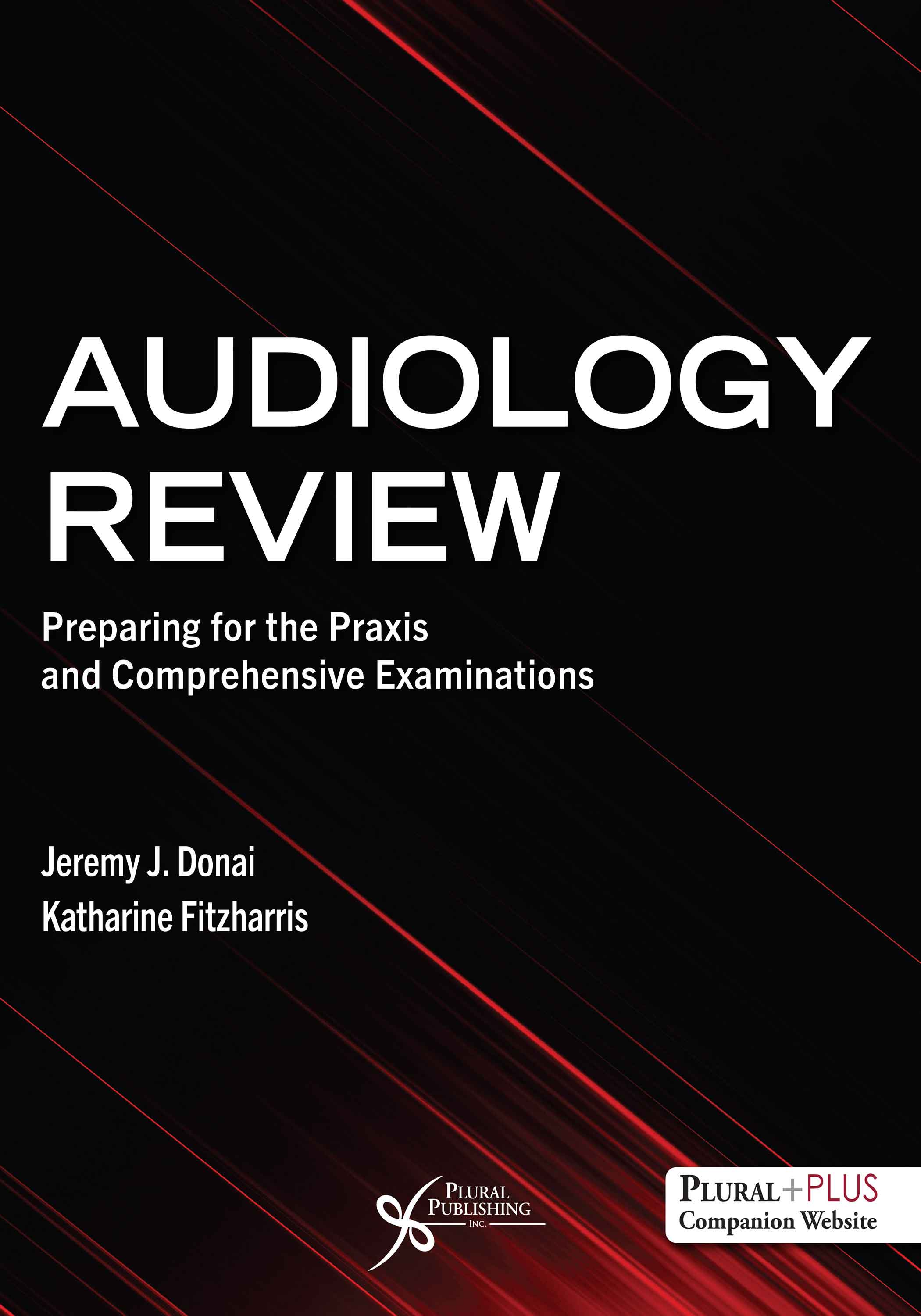
Audiology Review: Preparing for the Praxis and Comprehensive Examinations
First Edition
Jeremy J. Donai, Katharine Fitzharris
Details: 610 pages, B&W, Softcover, 8.5" x 11"
ISBN13: 978-1-63550-552-8
© 2024 | Available
For Instructors
Purchase
Prepare for your Audiology Exams with this study guide
and accompanying online practice test!
Audiology Review: Preparing for the Praxis and Comprehensive Examinations is intended to serve as a review guide for audiology students and audiologists preparing for AuD program comprehensive examinations and the Audiology Praxis® exam. The text can also serve as a resource for instructors teaching courses designed to review audiology content and prepare students for various types of formative or summative evaluations. Over 13 chapters, topics related to audiology basics, diagnostics, treatment, research, and professional issues are reviewed.
Unlike other Praxis study guides that lack audiology-specific content and are comprised solely of review questions, this book provides a review of the main audiology content areas, case-based examples, practice questions, and a full online practice test.
Section I begins with a description of test question types, then discusses strategies to select an answer, and finally discusses techniques to utilize when taking the Praxis. Section II covers the fundamentals of audiology: auditory and vestibular anatomy, physiology, and disorders; psychoacoustics, principles of sound, and audiometric instrumentation; as well as information regarding the development of speech and language in individuals with typical and atypical hearing. Section III further discusses audiological diagnostic techniques for adult and pediatric patients; vestibular testing and interpretation; and differential diagnosis of auditory and vestibular disorders. Section IV is a review of the screening and identification methods for hearing and balance disorders; industrial audiology; and treatment practices for amplification, implantable devices; as well as audiological counseling, and documentation. Section V concludes the book with a review of research, information on evidence-based practice, and professional topics in audiology.
Key Features:
- Access to an online practice test
- Practice questions with explanations at the end of each chapter
- Authors and contributors are experts in audiology and educators of audiology students
- Numerous helpful figures and appendices
Plural Plus Online Ancillary Materials
For professionals: Online practice exam, Integrated cases with questions, Recommended further readings and references
Reviews
“Drs. Donai and Fitzharris, along with numerous invited expert contributors, have produced a long-awaited, much needed resource for audiology students and graduates studying for their program’s comprehensive examination and the Audiology Praxis® exam. This book should be viewed as both complementary and supplementary to doctoral program instruction. As a review text, this book provides a fast and succinct overview of broad topics across the audiology scope of practice. It is organized deliberately in a manner to help review areas of foundation, prevention and identification, assessment, intervention, and professional issues. To aid in review, it helps to view this text as a handbook filled with numerous bite-size descriptions, bulleted lists, figures, and tables as well as a scattering of text boxes filled with Audiology Nuggets, Case Examples, Knowledge Checkpoints, and Q&As. In addition to Chapter 1 on Test-Taking Strategies, the end of each chapter has Practice Questions and follow-up explanations to help students gain familiarity with different types of questions and how to think about and respond to those questions. Those who purchase the book brand new may also benefit from the companion website (access code required) providing a practice exam and integrated cases for review. There are 120 practice exam questions, and each case has between 4-10 questions. Not only will students and graduates appreciate this resource, but I believe that audiology faculty will also find this book helpful in course and clinical preparation and execution to maximize student knowledge and competence.”
-Samuel R. Atcherson, PhD, Professor, Department of Audiology and Speech Pathology, University of Arkansas for Medical Sciences
Preface
Acknowledgments
Contributors
Reviewers
Section I. Test Taking Strategies and What to Expect
Chapter 1. Test-Taking Strategies
Kay T. Payne
Introduction
Understanding the Question
Selecting the Answer
Taking the Praxis
Practice Questions
Answers
Acknowledgment
Section II. Foundational Knowledge
Chapter 2. Anatomy, Physiology, and Relevant Pathologies
Jackie L. Clark and Katharine Fitzharris
Auditory System
Anatomical Terms of Orientation
Typical Anatomy of the Auditory Mechanism
Central Auditory Nervous System: Auditory Nerve to Cortex
Vestibular System
Peripheral Vestibular System
Disorders of the Vestibular System
Genetics
Major Embryological Developments
Postnatal Development
Lifetime Changes of the Auditory and Vestibular Systems
Recommended Readings
References
Practice Questions
Appendix Key
Appendix 2–A. Outer Ear Disorders
Appendix 2–B. Middle Ear Disorders
Appendix 2–C. Inner Ear Disorders
Appendix 2–D. Retrocochlear Disorders (Auditory Nerve and Central Auditory Nervous System)
Appendix 2–E. Vestibular Pathologies
Appendix 2–F. Genetic Disorders and Syndromes
Chapter 3. Acoustics, Psychoacoustics, and Instrumentation
Jenna Cramer, Katharine Fitzharris, and Jeremy J. Donai
Principles of Sound
Digital Signal Processing (DSP)
Signal Detection Theory (SDT)
d-prime (d ’) and Receiver Operating Characteristics (ROC) Curves
Psychophysical Methods
Validity and Reliability
Sensitivity and Specificity
Psychoacoustics
Auditory Recruitment and Outer Hair Cell (OHC) Function
Perception of Pitch and Timbre
Theories of Pitch Perception
Cochlear Dead Regions and Perceptual Considerations
Instrumentation in Audiology
Immittance Equipment
Hearing Aid Verification Equipment
Recommended Readings
References
Practice Questions
Chapter 4. Communication Across the Lifespan: Typical vs. Disordered
Angela Van Sickle and Brittany Hall
Typical Language Development
Morphological Development
Language and Speech Disorders in Children
Language and Speech Disorders Throughout the Lifespan
Auditory Hierarchy
Ling 6 Sounds
Effects of Hearing Loss in Children
Formal Ways to Assess Communication in Children With Hearing Loss
Effects of Hearing Loss in Adults
Communication Assessment for an Adult With Hearing Loss
Conclusions
Recommended Readings
References
Practice Questions
Appendix 4–A. Overview of Language Development Across a Lifespan
Section III. Assessment and Differential Diagnosis
Chapter 5. Adult Assessment and Differential Diagnosis
Karah Gottschalk and Trey Cline
Introduction
Audiology Case History
Otoscopy
Adult Behavioral Techniques
Physiological Techniques
Testing for Specific Pathologies
Special Populations
Differential Diagnoses
Conclusions
Recommended Readings
References
Practice Questions
Appendix 5‒A. Objective Assessment, Clinical Utility, and Anatomical Sites of Testing
Appendix 5‒B. Differential Diagnosis
Chapter 6. Pediatric Assessment and Differential Diagnosis
Tori J. S. Gustafson and Candace Bourland Hicks
Case History Considerations
Functional Questionnaires
Testing Considerations
Physiological Evaluation
Etiology of Pediatric Hearing Loss
(Central) Auditory Processing Disorder ((C)APD)
Educational Audiology
Theory of Mind
Recommended Readings
References
Practice Questions
Appendix 6–A. Abnormal Auditory Electrophysiological Findings
Chapter 7. Vestibular Assessment and Differential Diagnosis
Jamie M. Bogle
Introduction
Vestibular System Anatomy and Physiology
Vestibular Reflexes
Vestibular Nystagmus
Vestibular Case History and Questionnaires
Bedside Evaluations
Electronystagmography/Videonystagmography (ENG/VNG)
Rotational Chair Assessment
Video Head Impulse Test (vHIT)
Vestibular Evoked Myogenic Potential (VEMPs)
Electrocochleography (ECochG)
Functional Assessment
Vestibular System Pathologies
Vestibular Rehabilitation
Recommended Readings
References
Practice Questions
Section IV. Prevention, Identification, and Treatment
Chapter 8. Screening and Hearing Conservation
Leigh Ann Reel
Introduction
Screening Measures for Auditory and Balance Disorders
Hearing Conservation
Overview of NIHL
Industrial Audiology
Noise Measurement and Exposure Analysis
Noise Control
Audiometric Monitoring
Hearing Conservation Education and Training
Recommended Readings
References
Practice Questions
Appendix 8–A. Comparison of the OSHA Noise Standard and the NIOSH Noise Recommendations
Chapter 9. Treatment: Topics in Amplification
Emily Jo Venskytis and Melanie Lutz
Introduction to Hearing Aids
Special Populations
Introduction to Cochlear Implants
Bone-Conduction Devices
Auditory Brainstem Implants
Middle Ear Implants
Recommended Readings
References
Practice Questions
Appendix 9–A. Hearing Aid Styles/Types
Appendix 9–B. Cochlear Implant Programming Parameters
Chapter 10. Treatment: Topics in Aural Rehabilitation
Laura N. Galloway
Introduction
Defining AR
AR Components
Pediatric AR
Cultural Responsiveness, Competence, and Humility
Interprofessional Approach to AR
Summary
Recommended Readings
References
Practice Questions
Chapter 11. Counseling and Audiological Documentation
Alex Meibos
Importance of Audiological Counseling and Documentation
Audiological Counseling
Basic Theories of Counseling
Audiological Counseling Approaches
Addressing the Functional and Social Impacts of Auditory and Vestibular Disorders
Cultural and Linguistic Diversity (CLD)
Audiological Documentation
Recommended Readings
References
Practice Questions
Section V. Research and Professional Topics
Chapter 12. Research Applications and Evidence-Based Practice
Katharine Fitzharris, Jenna Cramer, and Jeremy J. Donai
Research Principles
Variable Levels
Variable Types
Study Design
Hypothesis Testing
Statistical Analyses
Types of Statistics
Probability Testing
Measures of Effect Size
Statistical Significance Versus Clinical Significance (Effect Sizes)
Sensitivity and Specificity
Ceiling and Floor Effects
Norm- Versus Criterion-Referenced Tests
Systematic Reviews and Meta-Analyses
EBP
Institutional Review Board (IRB)
Ethics in Research
Protections
Research Integrity
Recommended Readings
References
Practice Questions
Chapter 13. Audiology Professional Topics
Renee Zimmerman and Jeremy J. Donai
Professionalism
Moral, Legal, and Ethical Issues
Licensure Versus Certification
Code of Ethics Review
Patient Abandonment
Health Insurance Portability and Accountability Act
Family Educational Rights and Privacy Act (FERPA)
Advocacy
ADA and Accessibility Legislation
Interprofessional Education (IPE) and Interprofessional Practice (IPP)
Supervision Principles
Practice Management
Bundled Versus Unbundled Models of Service Delivery
Risk Management in Audiology
Infection Control
Recommended Readings
References
Practice Questions
Index
Audiology Review: Preparing for the Praxis and Comprehensive Examinations comes with access to supplementary student and instructor resources on a PluralPlus companion website.
The companion website is located at: https://www.pluralpublishing.com/publication/ar
STUDENTS:
The resources include an online practice exam and integrated cases with questions.
To access the student resources, you must register on the companion website and log in using the access code located in the front of your textbook.
INSTRUCTORS:
To access the instructor resources, you must contact Plural Publishing, Inc. to be verified as an instructor and receive your access code.
Email: instructormaterials@pluralpublishing.com
Tel: 866-758-7251 (toll free) or 858-492-1555
*Note for students: If you have purchased this textbook used or have rented it, your access code will not work if it was already redeemed by the original buyer of the book. Plural Publishing does not offer replacement access codes for used or rented textbooks.
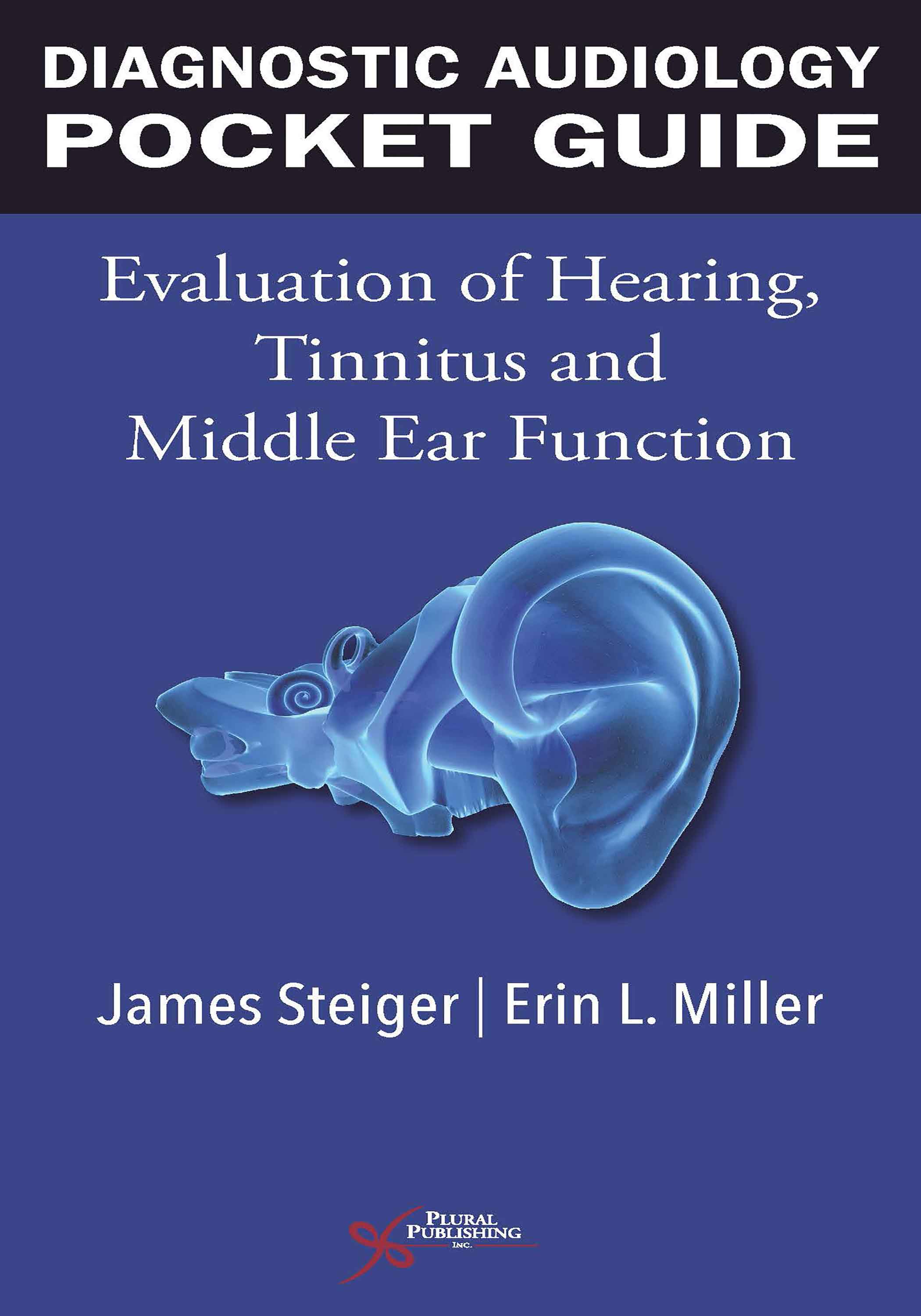
Diagnostic Audiology Pocket Guide: Evaluation of Hearing, Tinnitus, and Middle Ear Function
First Edition
James Steiger, Erin L. Miller
Details: 373 pages, B&W, Softcover, 4.5" x 8"
ISBN13: 978-1-94488-397-3
© 2017 | Available
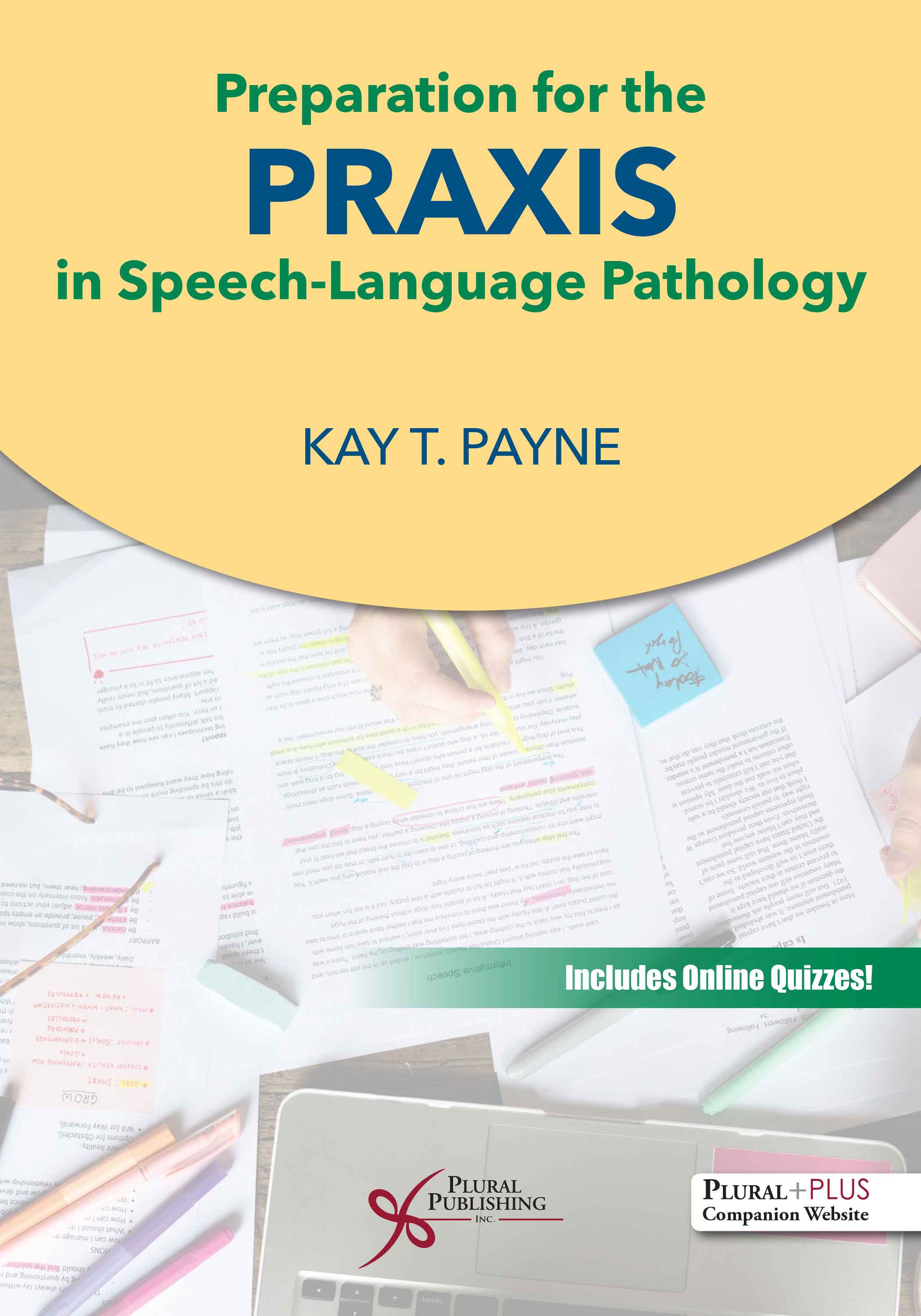
Preparation for the Praxis in Speech-Language Pathology
First Edition
Kay T. Payne
Details: 221 pages, B&W, Softcover, 7" x 10"
ISBN13: 978-1-63550-314-2
© 2020 | Available
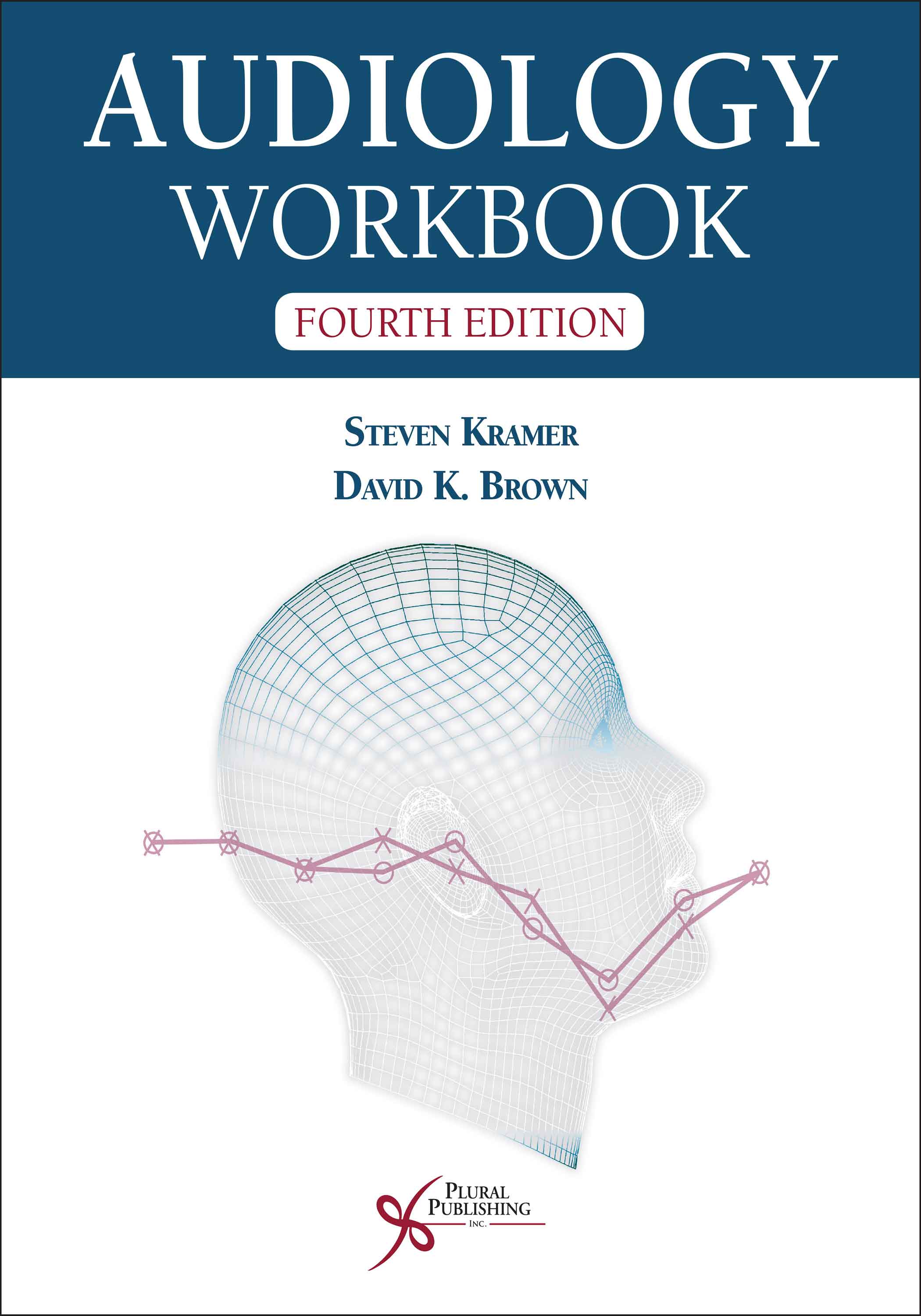
Audiology Workbook
Fourth Edition
Steven Kramer, David K. Brown
Details: 437 pages, B&W, Spiral Bound, 8.5" x 11"
ISBN13: 978-1-63550-348-7
© 2023 | Available


